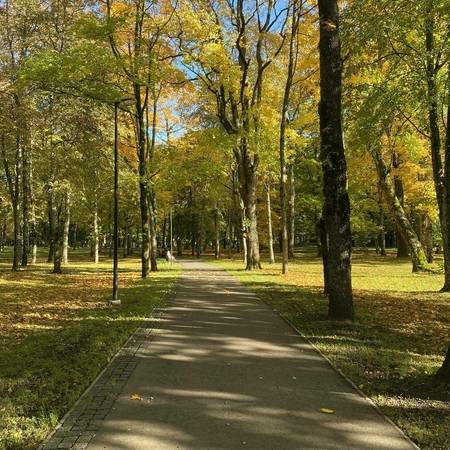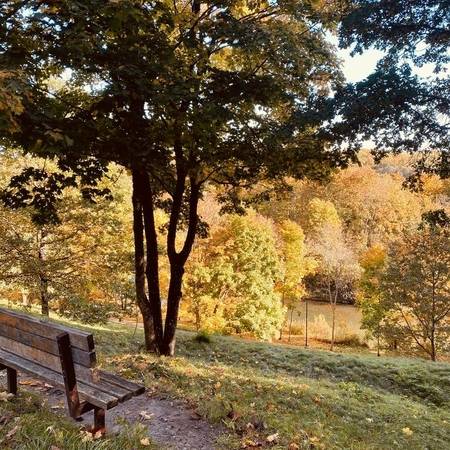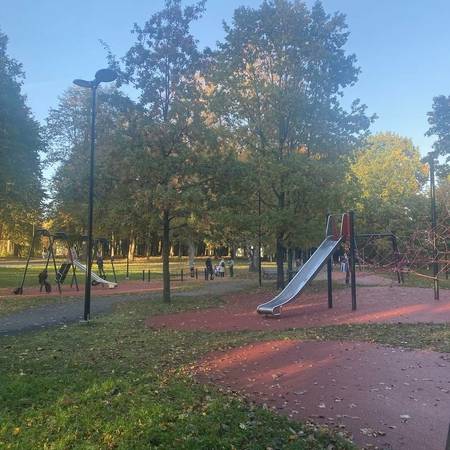The first mention of the Gargždai Manor in written sources dates back to the first half of the 15th century. In the 15th and 16th centuries, the manor belonged to the Kęsgaila family, the elders of Samogitia, and later to Baron Rönne.
In the first half of the 19th century, Baron Rönne established a park on the slope of the Minija River. The park was reconstructed and expanded in the middle of the 20th century. The area of the park consists of a flat western terrace and the gentle slope of the Minija bank. It offers excellent views of the winding Minija below. The park is lined by a network of straight alleys intersecting at right angles and three paths of curved terraces.
The main alley extended to the east crosses the rectangular space formed by the alleys, which leads to the cemetery of the soldiers who died in World War II. The main alley is extended by a curved path with groups of steps leading down to the river. As you walk along it, picturesque views of the Minija Valley unfold.
In the continuation of the axis of the old park, the famous 13th-century hillfort stands on the other side of Minija. The axis of the new park extends along the edge of the Minija bank. The park may be considered a composite park due to its two distinct parts.






Reviews